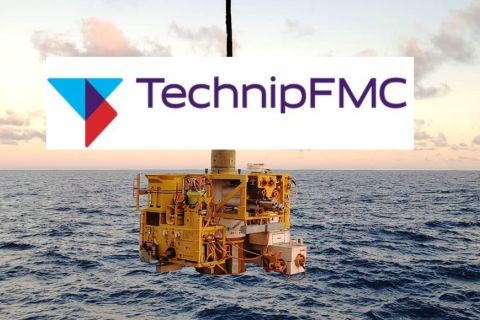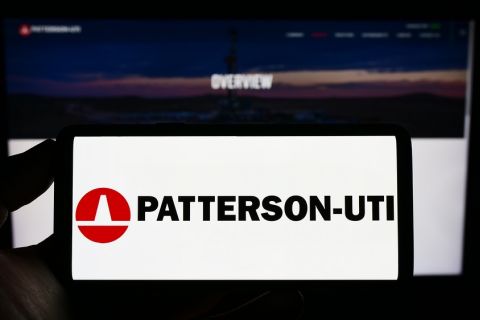Flexible pipes are the physical link between the seabed and topside of offshore installations, used to safely and cost-effectively transport hydrocarbons from the ocean floor to the surface, or for gas lift and water injection purposes. As offshore exploration and production has increasingly ventured into deeper fields, flexible risers have become a critical component of floating offshore facilities such as FPSO installations. Recognizing the importance of these flexible risers, operators are now using innovative technologies to monitor their performance to ensure integrity while maximizing availability and reducing the possibility of unnecessary downtime.
Monitoring the integrity of a riser can be challenging due largely to its complex design. To cope with the demands of the dynamic loading typically experienced with floating installations, the construction of flexible pipe consists of multiple unbonded steel armor “wire” and polymer layers enclosed within an outer sheath. While these layers are critical—each has a different role from preventing collapse or leaks to enabling the movement of the surface support—the resultant complex structure makes it difficult for conventional inspection techniques to provide the necessary monitoring for impactful integrity management. It is a situation that is further complicated by the confined area at which a flexible pipe faces the most significant integrity risks: the region between the splash zone and the top termination. This area is particularly congested, allowing no access for externally mounted inspection equipment.
A new approach for overcoming these difficulties involves the use of an electromagnetic stress measurement technology deployed to the outer surface of the flexible pipe with the ability to sense deep into the structure to gauge the integrity of the primary load-bearing elements—the steel armor wire layers. This methodology, known as MAPS-FR and underpinned by GE Oil & Gas’ MAPS stress measurement technique, allows for actual stress levels in the multiple wire layers to be measured, enabling operators to detect capacity degradation at the onset, thereby presenting new opportunities for assessing and reacting to structural condition.
With conventional inspection methods, typically the measurement equipment needs to be sited directly over the area where integrity is in question to enable the opportunity for detection. MAPS-FR is unique in that it is able to sense the effects of wire damage many meters away from the actual damage site itself. This is possible due to the unbonded nature of the pipe’s construction, which means that wire stress distribution can be seen both at the break and from an extended distance away in either direction. Another feature of the MAPS-FR approach is that it is not reliant on the detection of a transient response. Because wire degradation leaves a lasting impression on stress distribution, MAPS-FR instead can detect this at any time following an event. Coupled with its ability to provide information wire by wire and layer by layer, the system takes measurement reliability for flexible pipe to a new level.
The magnetic stress measurement technique
Magnetic techniques offer the scope for stress measurement in flexible pipe because they can be noncontacting, allowing them to measure steel wire stress through the polymer layers used in the outer protective sheath without any penetration into the structure. The magnetic properties of a ferromagnetic material (for example, iron and nickel) are sensitive to internal stress, with the MAPS-FR technology able to pick up and compare stress changes across adjacent wires to establish a good stress state vs. a bad stress state.
With factors such as mechanical hardness, grain size, texture and material properties also affecting magnetic parameters, the challenge lies in the ability to separate these effects from the desired stress signal. In addition, such techniques rely upon the creation of a magnetic circuit to measure the properties of the steel material, with the performance of this circuit highly dependent upon the distance between the measurement sensor and the steel (or in the case of flexible pipes, the details of the various wire layers and their interaction).
Application to flexible pipe
The application of MAPS-FR on flexible pipe is possible in two forms: as a monitor for permanent installation or as a scanning system for in-service inspection.
For monitoring purposes, multiple fixed sensors are distributed around the pipe with the number of sensor elements dependent upon diameter and wire count. The MAPS-FR can be fitted to the exterior of the pipe, allowing the equipment to either be integrated within a newbuild or retrofitted onto an existing riser in service. Meanwhile, the software system is flexible, and data management can be configured to meet the needs of the operator.
For an inspection device, a single sensor can be deployed and used to scan the riser surface so as to obtain information from each of the wires. The scanner system is controlled by a software script that manages both the sensor movement and the collection of data in a format ready for transmission and interpretation.
For a flexible riser, regions of particular concern lie in the top section of the pipe, including close-to-the-end fitting, where there is a significant change in stiffness between the riser and the connector; within the I-tube, where elevated temperatures can accelerate degradation; underneath the bend stiffener at the “work point,” i.e. the position of maximum cyclic bending; and the splash zone itself, where damage to the outer sheath can result in flooding of the annulus between the inner and outer polymer layers. The MAPS-FR technology can effectively monitor or scan in service this entire region from a single location, tackling the typical access issues posed by this congested region.
In some geographies the requirement for the inspection of flexible pipe continues to be an increasing need as systems approach their originally specified design lives and strategies to allow life extension are developed. Meanwhile, changing field conditions provide further incentives. For example, in some reserves increasing levels of hydrogen sulfide have the potential to put riser structures originally designed for “sweet” service at greater risk, with significant amounts of the acidic gas capable of causing damage through sulfide stress cracking. A means of monitoring and/or inspecting the load-bearing armor wires therefore becomes even more of a necessity.
Then there are the inevitable consequences of long-term operation in the rigors of the offshore environment: physical damage sites due to third-party incidents, for example, and the need to manage the repair to ensure satisfactory continued service.
Practical infield examples
Today, the technology is being used to carry out offshore inspections on in-service flexible risers with a current focus on assets in the U.K. Continental Shelf. This region was an early adopter of flexible pipe, and there are now several examples of installations presenting life extension opportunities. Inspection equipment such as that described above has been deployed, configured to suit the FPSO vessel’s constraints of access and with the inspection tasks proceeding as planned. There are now examples of risers in continued operating service following a MAPS-FR inspection. This activity shows that electromagnetic stress measurement technology can provide a valuable contribution to the integrity management of flexible pipe in-service.
Recommended Reading
TechnipFMC Eyes $30B in Subsea Orders by 2025
2024-02-23 - TechnipFMC is capitalizing on an industry shift in spending to offshore projects from land projects.
Patterson-UTI Braces for Activity ‘Pause’ After E&P Consolidations
2024-02-19 - Patterson-UTI saw net income rebound from 2022 and CEO Andy Hendricks says the company is well positioned following a wave of E&P consolidations that may slow activity.
ProPetro Reports Material Weakness in Financial Reporting Controls
2024-03-14 - ProPetro identified a material weakness in internal controls over financial reporting, the oilfield services firm said in a filing.
Baker Hughes Awarded Saudi Pipeline Technology Contract
2024-04-23 - Baker Hughes will supply centrifugal compressors for Saudi Arabia’s new pipeline system, which aims to increase gas distribution across the kingdom and reduce carbon emissions
JMR Services, A-Plus P&A to Merge Companies
2024-03-05 - The combined organization will operate under JMR Services and aims to become the largest pure-play plug and abandonment company in the nation.





